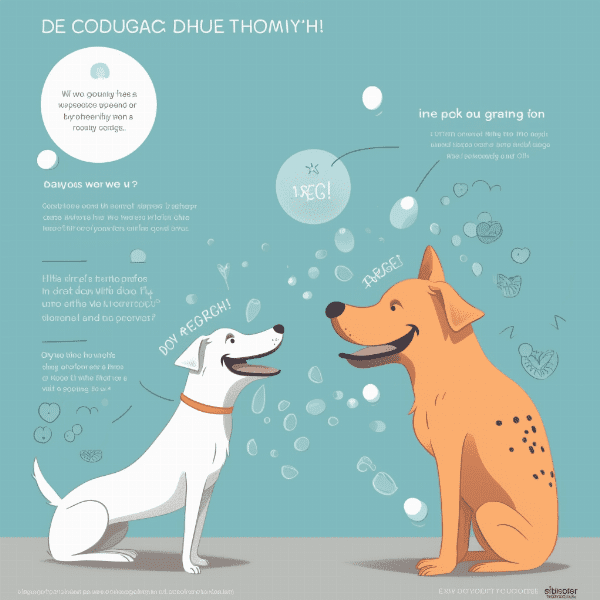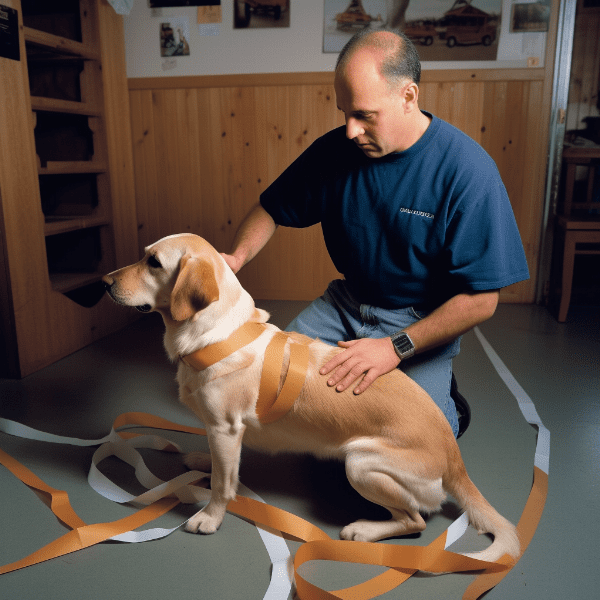Table of Contents
- Introduction to Dog Marking Territory Behavior
- The Science Behind Dog Marking Behavior
- Types of Dog Marking Behavior
- Reasons Why Dogs Mark Their Territory
- Understanding the Difference Between Marking and Urination
- How to Prevent Inappropriate Marking Behavior
- Tips for Managing Dog Marking in the Home
- Behavioral Training for Dogs that Mark Excessively
- Medical Conditions that can Affect Dog Marking Behavior
- Conclusion and Final Thoughts on Dog Marking Territory Behavior
Introduction to Dog Marking Territory Behavior
When it comes to understanding your dog’s behavior, marking is one of the most important aspects to consider. Marking territory is a natural and instinctive behavior in dogs, and it is important for their overall well-being. In this section, we will delve into what marking is, why dogs do it, and how to manage it in a healthy and responsible manner.
The Instinct of Marking
Marking is an innate behavior in dogs that serves as a form of communication. Dogs use urine to mark their territory and leave messages for other dogs. This behavior is particularly important in the wild, where dogs need to communicate with one another to establish dominance, establish mating opportunities, or warn off potential predators.
The Importance of Understanding Marking Behavior
Understanding why dogs mark their territory is essential to managing their behavior effectively. Many dog owners find marking behavior frustrating or annoying, especially when it occurs indoors. However, it is important to remember that marking is a natural and instinctual behavior for dogs, and it is not done out of spite or malice.
Marking vs. Urination
It is important to distinguish between marking and urination. Dogs urinate for many reasons, including to empty their bladder or to relieve themselves. Marking, on the other hand, is a behavior that is done to communicate and leave messages for other dogs. Marking behavior is typically characterized by small amounts of urine in specific locations, while urination is done in larger quantities to empty the bladder.
How to Manage Marking Behavior
Managing your dog’s marking behavior requires a combination of training, patience, and consistency. You should start by establishing a clear routine and schedule for your dog, providing ample opportunities for them to relieve themselves outside. It is also important to supervise your dog closely and intervene when you notice them marking inappropriately. With time, patience, and consistent reinforcement, you can help your dog develop healthy and appropriate marking behavior.
Understanding your dog’s marking behavior is crucial to maintaining a healthy and happy relationship with your pet. By learning about the reasons behind marking behavior and how to manage it effectively, you can create a positive and enjoyable environment for both you and your furry friend.
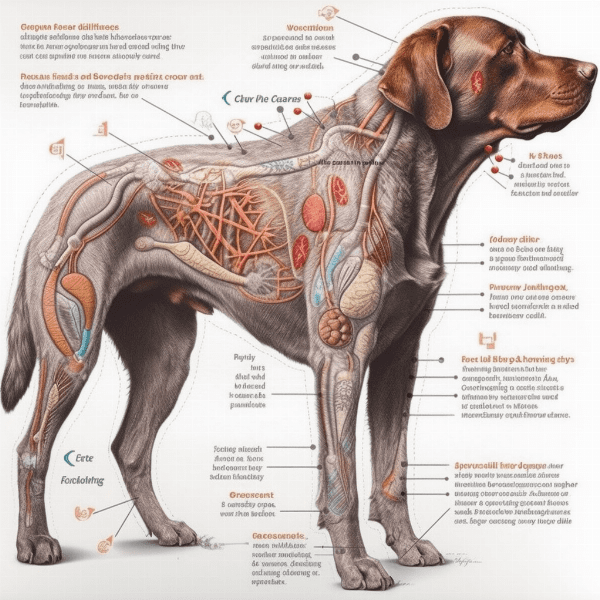
The Science Behind Dog Marking Behavior
The act of marking is deeply rooted in a dog’s instinct and biology. Understanding the science behind this behavior can shed light on why dogs mark their territory and how we can manage it effectively.
Olfactory Communication
Dogs have a highly developed sense of smell, and they use their sense of smell to communicate with other dogs. When a dog marks its territory, it leaves a scent that contains important information, such as its age, sex, and reproductive status. Other dogs can use this information to determine if they are dealing with a potential rival or a potential mate.
Hormones and Marking Behavior
Hormones also play a role in a dog’s marking behavior. Testosterone, for example, is known to increase marking behavior in male dogs. This hormone is responsible for promoting territorial and aggressive behavior, which can lead to increased marking. Additionally, female dogs may mark more frequently during their heat cycle as a way to signal their reproductive status to male dogs.
Social Factors
Marking behavior is also influenced by social factors. Dogs that live in multi-dog households or in areas with high dog traffic may mark more frequently to establish their territory and communicate with other dogs. Similarly, dogs that feel threatened or anxious may also mark more frequently as a way to assert their dominance and relieve their stress.
The Role of Positive Reinforcement
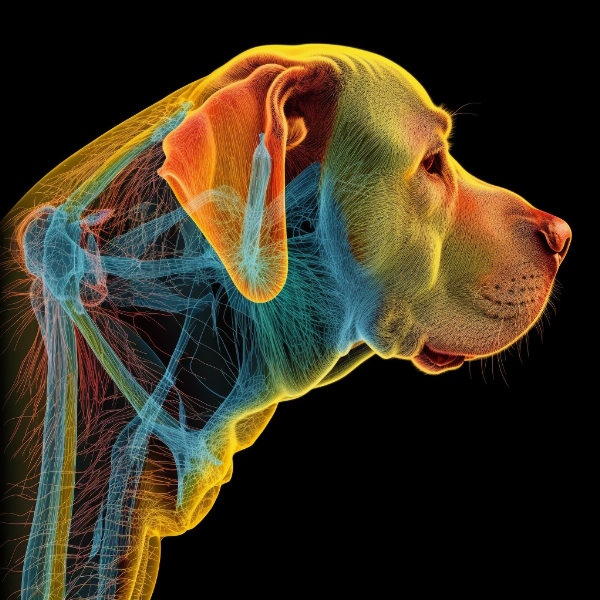
Types of Dog Marking Behavior
There are several different types of Dog marking behavior, each with its own unique characteristics and motivations. Understanding these different types can help you identify and manage your dog’s marking behavior effectively.
Overmarking
Overmarking occurs when a dog marks over the scent of another dog. This behavior is typically done as a way to assert dominance and communicate with other dogs. Dogs that engage in overmarking may do so to establish their place in the social hierarchy or to communicate that they are a potential mate.
Scent Marking
Scent marking is the most common type of marking behavior in dogs. This behavior involves leaving small amounts of urine in specific locations as a way to communicate with other dogs. Dogs may scent mark as a way to establish their territory, communicate their presence, or signal their reproductive status.
Territory Marking
Territory marking is a type of marking behavior that is done to establish and defend a dog’s territory. Dogs that engage in this behavior may mark frequently around the perimeter of their territory or in specific locations within their territory. This behavior is typically more common in male dogs and may be influenced by factors such as hormones and social dynamics.
Anxiety-Based Marking
Anxiety-based marking is a type of marking behavior that occurs when a dog is feeling stressed or anxious. Dogs that engage in this behavior may mark frequently in areas where they feel threatened or insecure. This behavior may be triggered by factors such as changes in the household or separation anxiety.
Sexual Marking

Reasons Why Dogs Mark Their Territory
Marking is a natural and instinctual behavior in dogs, and there are several reasons why dogs engage in this behavior. Understanding these reasons can help you manage your dog’s marking behavior effectively.
Communication
One of the primary reasons why dogs mark their territory is to communicate with other dogs. Dogs use their sense of smell to gather information about other dogs, including their age, sex, and reproductive status. Marking can help dogs establish their place in the social hierarchy and communicate their presence to other dogs.
Territory Establishment
Dogs are territorial animals, and marking is a way for them to establish and defend their territory. Dogs that mark frequently in specific locations are sending a clear message to other dogs that they consider that area to be their territory. This behavior is particularly common in male dogs, who may mark more frequently to establish their dominance.
Reproductive Signaling
Marking can also be a way for dogs to signal their reproductive status to other dogs. Female dogs may mark more frequently during their heat cycle as a way to communicate their availability to male dogs. Male dogs may also mark more frequently during mating season as a way to attract potential mates.
Anxiety and Stress
In some cases, dogs may mark more frequently when they are feeling anxious or stressed. Dogs that are experiencing changes in their environment, such as moving to a new home or the addition of a new pet, may mark more frequently as a way to alleviate their stress and anxiety.
Medical Issues
In rare cases, dogs may engage in excessive marking behavior due to medical issues such as bladder infections or urinary tract problems. If you notice that your dog is marking excessively or in inappropriate locations, it is important to consult with a veterinarian to rule out any underlying medical issues.
Understanding the reasons why dogs mark their territory is essential to managing their behavior effectively. By considering factors such as communication, territory establishment, reproductive signaling, anxiety, and medical issues, you can help your dog develop healthy and appropriate marking behavior.

Understanding the Difference Between Marking and Urination
While both marking and urination involve the elimination of urine, they are two distinct behaviors with different motivations and characteristics. Understanding the difference between these behaviors is important for managing your dog’s behavior effectively.
Motivation
The primary motivation behind marking behavior is communication with other dogs. Dogs use their sense of smell to communicate with other dogs, and marking is one way they do so. On the other hand, the primary motivation behind urination is to relieve the bladder and eliminate waste from the body.
Quantity
The amount of urine produced during marking behavior is typically much less than during urination. Dogs may leave small amounts of urine in specific locations when marking, while urination involves the elimination of larger quantities of urine to empty the bladder.
Location
Marking behavior is typically done in specific locations, while urination can occur anywhere. Dogs may mark in specific locations as a way to communicate with other dogs, establish their territory, or signal their reproductive status. Urination, on the other hand, is done to relieve the bladder and can occur anywhere that is convenient for the dog.
Frequency
Dogs may engage in marking behavior more frequently than urination. This is because marking behavior is motivated by communication with other dogs, which is an important part of a dog’s social behavior. Urination, on the other hand, is done primarily for elimination purposes and does not have the same social motivation.
Training
Training to manage marking behavior is different from training to manage urination. Marking behavior can be managed by providing appropriate opportunities for your dog to mark, supervising your dog closely, and intervening when necessary. On the other hand, training to manage urination involves providing ample opportunities for your dog to relieve themselves outside, establishing a regular routine and schedule, and reinforcing appropriate elimination behavior with positive reinforcement.
Understanding the difference between marking and urination is important for managing your dog’s behavior effectively. By considering factors such as motivation, quantity, location, frequency, and training, you can help your dog develop healthy and appropriate elimination behavior.
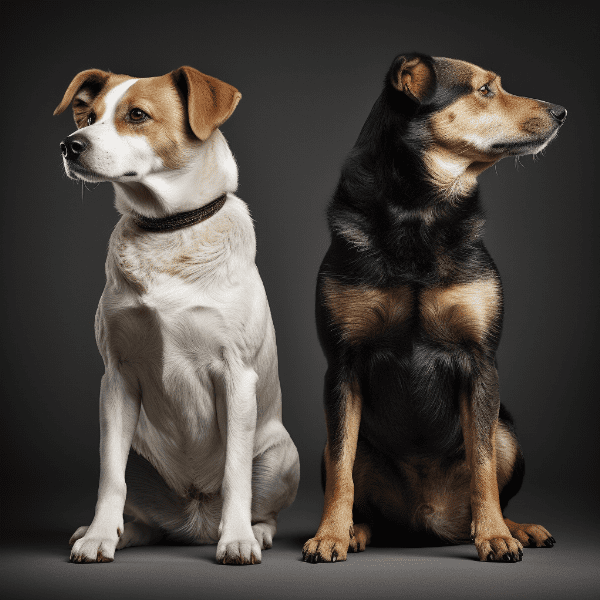
How to Prevent Inappropriate Marking Behavior
Provide Appropriate Opportunities for Marking
Dogs need to mark to communicate with other dogs and establish their territory. Providing appropriate opportunities for your dog to mark outside can help satisfy their need to mark and reduce inappropriate marking behavior indoors. Be sure to provide ample time for your dog to explore and mark during walks or outdoor playtime.
Manage Your Dog’s Environment
Managing your dog’s environment can also help prevent inappropriate marking behavior. If your dog is prone to marking in certain areas, try to limit their access to those areas. Use baby gates or crates to restrict your dog’s access to areas of the house where they have marked inappropriately.
Consider Spaying or Neutering
Spaying or neutering your dog can help reduce marking behavior, especially in male dogs. This is because the hormones that drive marking behavior are reduced after spaying or neutering. However, spaying or neutering is not a guarantee to prevent marking behavior altogether, so it is important to continue training and managing your dog’s behavior.

Tips for Managing Dog Marking in the Home
Managing dog marking behavior in the home can be challenging, but there are several tips and strategies that can help. By following these tips, you can create a happy and healthy environment for both you and your furry friend.
Restrict Access to Certain Areas
Restricting your dog’s access to certain areas of the home can help prevent inappropriate marking behavior. Use baby gates or closed doors to limit your dog’s access to areas where they have marked in the past. This can help break the habit of marking inappropriately and reduce the likelihood of future incidents.
Clean Up Messes Promptly
Cleaning up messes promptly is important to prevent your dog from returning to the same spot. Use a pet odor neutralizer to eliminate the scent of urine and discourage your dog from marking in the same spot again. Avoid using cleaning products that contain ammonia, as this can actually encourage your dog to mark in the same spot again.
Supervise Your Dog Closely
Supervising your dog closely is important to manage their marking behavior. Keep an eye on your dog when they are indoors and intervene when you notice them engaging in inappropriate marking behavior. Redirect your dog’s attention to appropriate activities, such as play or training, and reinforce appropriate behavior with positive reinforcement.
Provide Ample Opportunities for Exercise and Playtime
Dogs that are bored or under-exercised may engage in inappropriate marking behavior as a way to relieve their stress or anxiety. Providing ample opportunities for exercise and playtime can help reduce your dog’s stress levels and prevent inappropriate marking behavior.
Consider Behavioral Training
Behavioral training can be helpful in managing dog marking behavior, especially if your dog is engaging in excessive or inappropriate marking behavior. Consider working with a professional dog trainer or behaviorist to develop a training plan that addresses your dog’s specific needs and behavior.
Managing dog marking behavior in the home requires patience, consistency, and persistence. By following these tips and working with your dog consistently, you can help them develop healthy and appropriate marking behavior.

Behavioral Training for Dogs that Mark Excessively
Dogs that mark excessively may require behavioral training to manage their behavior effectively. Behavioral training can help address underlying issues that may be driving excessive marking behavior and provide your dog with the skills they need to develop healthy and appropriate behavior.
Positive Reinforcement
Positive reinforcement is an effective training method for managing dog marking behavior. When your dog marks in an appropriate location, such as outside, you can reward them with treats or praise. This positive reinforcement can help your dog learn that marking in appropriate locations is desirable, while marking in inappropriate locations is not.
Crate Training
Crate training can be helpful in managing dog marking behavior, especially if your dog marks excessively when left alone. By providing your dog with a safe and comfortable space, such as a crate, you can prevent them from engaging in inappropriate marking behavior when unsupervised. However, it is important to introduce your dog to the crate gradually and make it a positive and comfortable space.
Desensitization Training
Desensitization training can be helpful in managing marking behavior that is triggered by anxiety or stress. This type of training involves gradually exposing your dog to the triggers that cause them to mark excessively, such as new people or changes in the environment. By exposing your dog to these triggers in a controlled and positive way, you can help reduce their anxiety and prevent excessive marking behavior.
Establishing a Routine
Establishing a routine can be helpful in managing excessive marking behavior in dogs. By providing your dog with a regular schedule for feeding, exercise, and elimination, you can reduce their stress levels and prevent inappropriate marking behavior. Stick to a regular routine as much as possible and be consistent with your training and management strategies.
Consistency and Persistence
Consistency and persistence are key to managing dog marking behavior. Behavioral training takes time and effort, and it is important to be patient and persistent in your efforts. Consistently reinforce positive behavior with rewards and redirect inappropriate behavior with positive and consistent training.
Behavioral training can be effective in managing excessive marking behavior in dogs. By using positive reinforcement, crate training, desensitization training, establishing a routine, and being consistent and persistent, you can help your dog develop healthy and appropriate marking behavior.
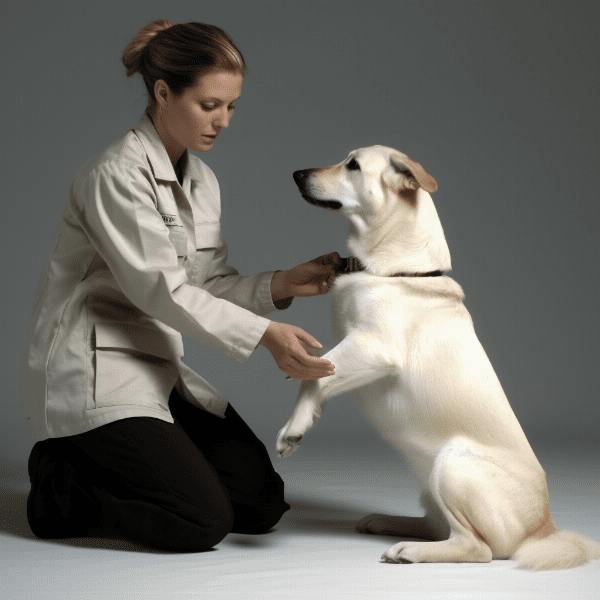
Medical Conditions that can Affect Dog Marking Behavior
In some cases, medical conditions can affect dog marking behavior. It is important to be aware of these conditions and seek veterinary care if you suspect your dog may be experiencing health issues that are contributing to their marking behavior.
Urinary Tract Infections
Urinary tract infections (UTIs) are a common medical condition that can affect dog marking behavior. Dogs with UTIs may have difficulty controlling their bladder and may mark in inappropriate locations as a result. Other symptoms of UTIs in dogs include frequent urination, straining to urinate, and blood in the urine.
Bladder Stones
Bladder stones are another medical condition that can affect dog marking behavior. These stones can cause discomfort and pain when your dog urinates, which may lead to inappropriate marking behavior as a way to alleviate their discomfort. Other symptoms of bladder stones in dogs include frequent urination, straining to urinate, and blood in the urine.
Hormonal Imbalances
Hormonal imbalances can also affect dog marking behavior, especially in male dogs. Conditions such as hypothyroidism or adrenal gland disorders can cause hormonal imbalances that contribute to excessive marking behavior. Other symptoms of hormonal imbalances in dogs may include changes in appetite or energy levels, weight gain or loss, and changes in coat condition.
Cognitive Dysfunction
Cognitive dysfunction, or canine dementia, can also affect dog marking behavior. Dogs with cognitive dysfunction may become disoriented or confused and may mark in inappropriate locations as a result. Other symptoms of cognitive dysfunction in dogs include changes in sleep patterns, increased vocalization, and changes in social behavior.
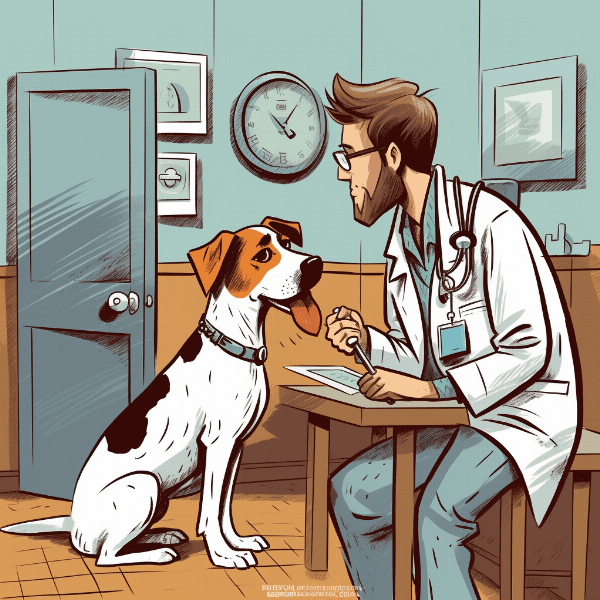
Conclusion and Final Thoughts on Dog Marking Territory Behavior
Dog marking behavior is a natural and important part of a dog’s communication with other dogs. However, excessive or inappropriate marking behavior can be a challenge for pet owners to manage. By understanding the science behind dog marking behavior, the reasons why dogs mark their territory, and the strategies for managing and preventing inappropriate marking behavior, pet owners can help their dogs develop healthy and appropriate marking behavior.
It is important to remember that managing dog marking behavior requires patience, consistency, and persistence. It may take time and effort to address inappropriate marking behavior, and it is important to work with your dog consistently to help them develop healthy and appropriate elimination behavior.
In conclusion, understanding and managing dog marking behavior can help pet owners develop a strong and positive relationship with their furry friend. By providing appropriate opportunities for marking, supervising your dog closely, cleaning up messes promptly, and considering behavioral training or medical intervention when necessary, pet owners can help their dogs develop healthy and appropriate marking behavior.
